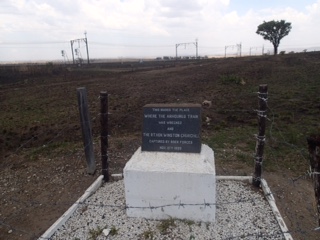Winston

VulcanSpirit
Richard & Alison Brunstrom
Tue 8 Dec 2015 21:58
Although time did not permit more than a superficial skate over the Boer Wars it was possible to visit the site of one of the wars more unusual events, which had it gone differently might have changed the course of history.
Winston Churchill was in SA to cover the Second Boer war as a war correspondent, aged 25. On 15 November 1899 he was on an armoured troop train heading north through Natal when it was ambushed by a Boer commando operating deep into British territory. The train was derailed by a large Boulder and a gunfight developed which the Boers won. Churchill was stranded by the line side and was captured at gunpoint and was treated as a prisoner of war because he was armed. He could very easily have been shot as a spy which would probably have utterly changed the course of history.
He made a thrilling escape some four weeks later, went overland to Mozambique and thence back to British territory in time to be present at the relief of Mafeking.
Interestingly his captor was Louis Botha; both men went on to become Prime Ministers of their respective countries.
The site of his capture has a small monument, now sadly dilapidated and in a rather uninspiring piece of country - but at least it is marked (though in true South African fashion the brown tourist sign is only present in one direction on the main road, and once you've turned off it is necessary to proceed by guesswork and elimination).
Sent from my iPad
